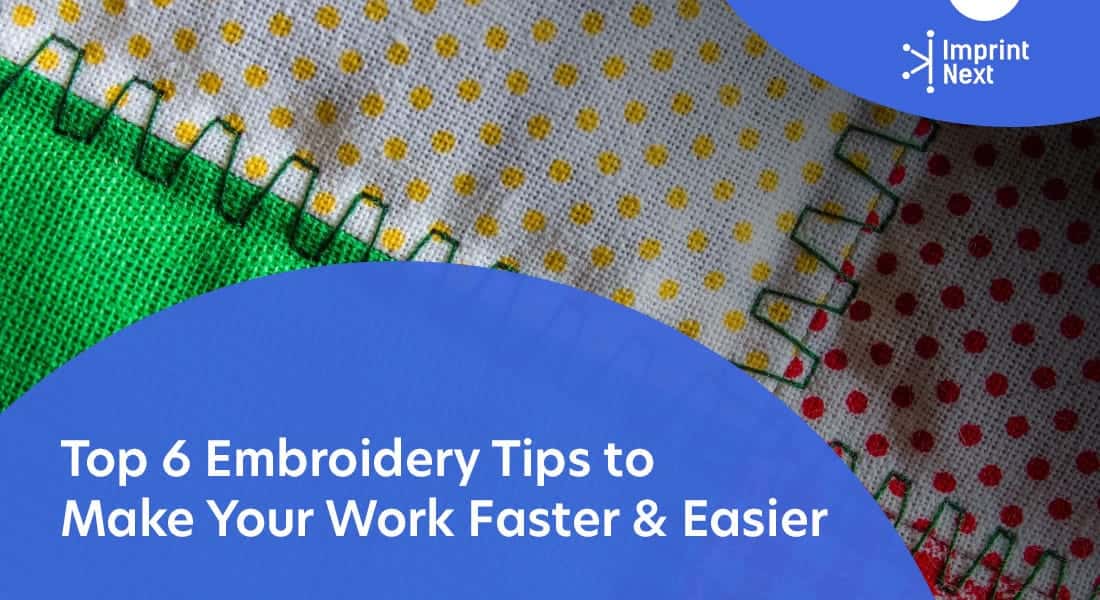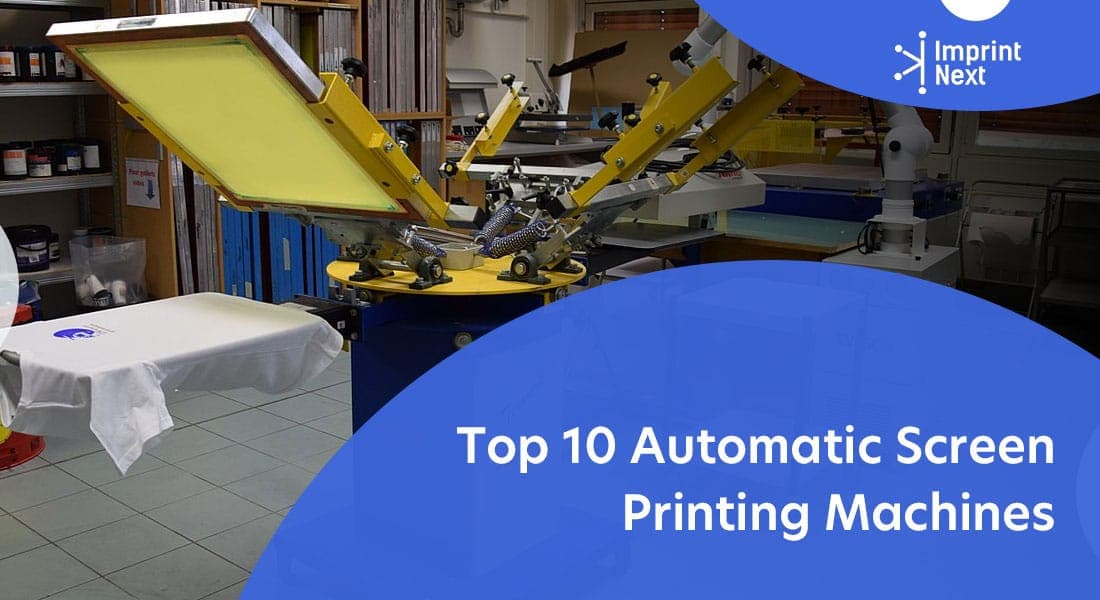
Last Updated on: 4th March 2021, 2:55 pm
If you are in the embroidery industry and want to improve your skills, these embroidery tips are for you! When you start the embroidery industry, you need to be skilled and mastered in crafting beautiful designs for embroidery.
It may be difficult to fulfil orders with manual stitching. So, you need the entire embroidery kit. That includes an embroidery machine, hoop, floss, scissors, marking tool, etc. However, it is better to start by practising manually. Later on, you may get industrial embroidery machines to make your work faster and easier.
6 Embroidery Tips to Make Your Work Easier :
Make your embroidery work easier by crafting beautiful and high-quality designs that make your customers happy.
Here you get six simple embroidery tips & techniques to start from the beginning:-
01. Needles:
There are plenty of embroidery needles you can find in the market. The different needles are Tapestry Needles, Crewel Needles, Chenille Needles, Milliner Needles, Specialty Needles, etc.
However, you have many options to purchase but choosing the right one that meets your purpose is important.
It would help if you chose the right needle, the exact thread size, and most importantly, the purpose of using it.
As this blog is all about embroidery tools, you must be skilled enough to know the purpose of your embroidery work. If you are skilled enough, then these tools are going to benefit you.
In the meantime, let us move to the second section about choosing the right needle size.
02. Which needle size is the best?
There are numerous embroidery needle sizes available in the market with specific requirements. The right side of the needle should enable the thread to pass through it easily.
You must ensure that it should not permanently disturb the texture of the fabric.
Embroiders mostly choose 75/11 sharp-point needles; however, this varies upon three conditions, namely:-
- Garment type
- Thread Size
- Needle Size
While embroidering on a thicker surface like hats, use an 80/12 sharp point needle or a 75/11 sharp point titanium needle.
For stitching on canvas, use a needle of size 22. To ease stitching and prevent the breaking of threads, it is better to use smaller needles.
However, I mention thread size as well. Passing a thicker thread from a small-sized needle’s eye causes less space to pass through it and finally breaks easily.
Even needles wear out!
The entire pressure of the thread is concentrated over the needle's eye. Therefore, the eyes may bend or wear off badly.
Solution:-
1. Change your needles. 2. Other remedies like applying tarnish oils on minute rust spots or tiny scratches. You can also use walnut hulls by cruising them to sharpen and clean needles from debris.
Also read: 10 Most Popular Embroidery Trends in 2021
03. Thread:
There are various thread types like synthetic, cotton, wool, rayon, and linen based on the fabric material.
The standard size of the thread is 40. However, it may vary from 30 to 60—thread size 30 means thicker, and size 60 means thinner.
Use size 60 thread for complex designs, especially on the thin fabric, whereas for thick materials like canvas shoes, use size 30 needle.
Which thread should you prefer?
Many embroiders find it difficult to choose the type of embroidery thread best for their work.
For commercial uses, use polyester threads as it is less expensive and resistant to bleach.
On the other hand, rayon is the least abrasive, especially in machine embroidery. Therefore, the thread does not break easily.
Moreover, the rayon has a silky shine texture and is soft in touch.
How to check damaged threads?
Check through the eye the damage you find in the thread. Most probably blurs.
Therefore, use a larger needle or shorter thread length. However, it is better to discard the damaged part of the thread.
Some threads like human-made metallic and embroidery ribbon are delicate and likely to wear always.
Temperature:
Even temperature can pose a problem. Warm temperatures degrade the quality of thread when stored for a long time. So it is advised to store thread at a cool place.
It would help if you also considered hygiene. Store threads at clean and dirt-free locations to avoid possible contamination.
Also read: 10 Tools That Make Your Embroidery Job Easier
04. Hooping;
Fabric tensioning is important to keep your fabrics stable to endure the embroidery process and keep the fabric safe.
Therefore, the embroidery hoop has an important role in the embroidery process. Improper causes several problems in the stitching process.
If the hoop is too loose on the garment you knit, designs may not come into proper alignment. On the other hand, tight hoops can cause the garment to wrinkle.
Therefore, knowing the different types of hoops is important to produce a quality design. Some of them are:-
- Hoop Material: Plastic hoops have been a popular choice for many. However, wooden hoops are preferable for larger hoop sizes. Moreover, double-high hoops are the most popular as it has a strong grip on slippery and bulky materials. For instance, jackets have a slippery surface and are embroidered in large hoops.
- Hoop Shape: To embroider on a garment efficiently, you need to have a proper grip and tension of the embroidery surface. Lack of fabric tensioning causes uneven and distorted designs on fabric. Therefore, round or oval hoops are most preferred to create even tension on fabrics.
How to remove hoop marks?
If you are done with stitching, you are left with a hoop maker that imposes a question from your client about quality. So, you need to maintain proper quality control to prevent and reduce hoop marks.
Therefore, you can remove the hoop mark by spraying water on the marked area and letting the garment dry.
You can also go for Mighty Hoops that eliminates such problems.
Also read: How these 10 Adjustments Ensure High-Quality Embroidery?
05. Embroidery Design Transfer:
In this technique, you make a draw a design using a pencil directly over the garment. Then you stitch over the design lines.
You also have other options like a silk gauge and an inkjet printer to transfer the embroidery design from one fabric to another.
The printer uses a vector graphic image to print on the fabric directly.
As you do it with a printer, make sure that the fabric and design size fits the printer.
Also read: Can you Perform Embroidery on T-shirts?
06. Embroidery Machines:
If you run an industry, you need to fulfill your clients' demands quickly. Manual embroidery won’t work. It would be best if you had an embroidery machine.
It saves time, increases efficiency, and saves expenses over labor costs.
The embroidery machines range from one to twelve heads, depending upon your requirements. You can purchase embroidery machines from top brands like Meistergram, ColDesi, Tajima, etc.
Conclusion:
Finally, if you are getting started as an embroiderer, these embroidery tips will help you pave your way and make work a lot easier.
Lastly, these embroidery tips can help if you have known the pre-requisites and your requirements for embroidery work. For instance, you must know the type of embroidery project you need to do. Only then do you get options to choose from different types of threads, needles, machines, etc.?
Therefore, it is better to acquire basic embroidery skills under the guidance of an expert.
Related Questions:
1. Is embroidery easy?
Yes, embroidery is easy to learn but it takes time to learn the skill. Moreover, it is inexpensive to get started.
2. Can you embroider without a hoop?
Yes, you can embroider without a hoop. Moreover, hoop stabilizes your work and helps if you are a begineer.
















